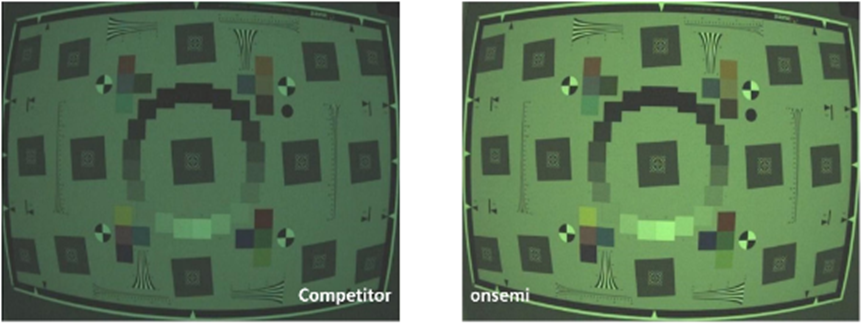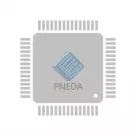How can ON's advanced image sensors improve road safety

While advancements in automotive technology, including crash structures, airbags, brakes and tires, have helped improve vehicle safety, we still face a variety of road risks. And those risks are constantly changing. Driving conditions such as low light levels significantly increase the danger on the road, and such driving conditions not only challenge the driver, but also the sensors in the vehicle's Advanced Driver assistance systems (ADAS). In harsh nighttime and low-light environments, high-performance automotive sensors are needed to ensure driving safety.
Obviously, roads present a greater risk in low light conditions. The Insurance Institute for Highway Safety (IIHS) found that in 2021, 54% of road fatalities in the United States occurred in low-light conditions between 18:00 p.m. and 6:00 a.m., even though there was less traffic on the road during that time period. Similarly, the National Highway Traffic Safety Administration (NHTSA) states that more than 70 percent of pedestrian fatalities occur at night.
One of the main reasons why low-light environments increase the danger of driving is the limitation of human vision. In dark conditions, drivers often fail to detect risks in a timely manner or fail to notice them at all. What's more, facing lights can make the problem worse by blinding drivers. In addition, factors such as drivers falling asleep or driving under the influence can further increase the risk. In the face of these factors and environmental conditions, ADAS functions can help reduce accidents, so the performance of the underlying sensors is critical to ensure safety.
Low light performance
Onsemi understands the complexity of automotive applications and has developed the AR0220AT. This 1.7 megapixel (MP) sensor is designed for ADAS functionality. The powerful performance of the sensor is due to the advanced double conversion gain (DCG), as well as the larger 4.2µm pixel design. Many sensor manufacturers have adopted a small pixel design, using a combination of small photodiodes and large photodiodes, but this can easily create saturation problems and create unnecessary artifacts in low light conditions.
With DCG technology, we can use larger pixel sizes, and the sensor can dynamically adjust the conversion gain of the pixels, thus adjusting the response according to the dynamic range of the scene. This technology enables accurate imaging of high dynamic range (HDR) environments and reduces flicker effects from pulsed light sources such as car headlights and brake lights.
Other design considerations
There are other important considerations for the safety that sensors provide and for automakers looking to implement the technology effectively. The sensor uses embedded hardware mechanisms to monitor all images in real time, labeling each frame as "good" or "potentially problematic." In this way, the ADAS controller fully ensures the accuracy of each frame of the image, prevents the wrong image from triggering unnecessary vehicle intervention, and enables the system to perform the correct action.
For ON, the integrated Ball Grid Array (iBGA) package was the logical choice. This is because iBGA has a compact design and higher thermal stability than the chip-scale packages (CSPS) used by many competing solutions. Unlike CSP designs, iBGA does not deform easily under the harsh, high-temperature conditions faced by many automotive applications. The AR0220AT has also been optimized to reduce operating power consumption to 269 mW, which not only reduces operating temperature, but also further reduces sensor noise and improves low-light performance.
Conclusion
The reliability and image quality of automotive image sensors are critical and need to maintain high performance in a variety of conditions to ensure safety in any road condition. There are many features to consider when designing a camera system that meets such needs, but perhaps the most important are the sensor's dynamic range and low-light performance. Manufacturers can rely on the high performance and easy integration of the AR0220AT to provide a higher level of safety and autonomy for ADAS systems.
The Products You May Be Interested In
 |
CP2500DC54-PEZ-F | DC/DC CONVERTER 54V 2500W | 8226 More on Order |
 |
PNDT003A0X43-SRZ | MODULE DC DC CONVERTER | 8352 More on Order |
 |
AVX012A0X3-SRZ | DC DC CONVERTER | 4212 More on Order |
 |
ATS030A0X3-SRPH | DC DC CONVERTER 0.8-2.75V 83W | 5544 More on Order |
 |
APTH020A0X43-SRZ | DC DC CONVERTER 0.6-3.63V 73W | 8226 More on Order |
 |
QRW040A0Y641-BHZ | DC DC CONVERTER 1.8V 72W | 8298 More on Order |
 |
QW020A0P1 | DC DC CONVERTER 1.2V 24W | 8460 More on Order |
 |
QRW035A0F1 | DC DC CONVERTER 3.3V 116W | 8928 More on Order |
 |
QRW025A0A41 | DC DC CONVERTER 5V 125W | 4680 More on Order |
 |
LW020A8 | DC DC CONVERTER 5V 20W | 4590 More on Order |
 |
LW015B91 | DC DC CONVERTER 12V 15W | 5112 More on Order |
 |
JW075B1 | DC DC CONVERTER 12V 75W | 650 More on Order |
 |
JBW050A1 | DC DC CONVERTER 5V 50W | 7146 More on Order |
 |
HW100F1 | DC DC CONVERTER 3.3V 66W | 2934 More on Order |
 |
EQW012A0A1 | DC DC CONVERTER 5V 60W | 3654 More on Order |
 |
QBDW033A0B41-PHZ | DC DC CONVERTER 12V 400W | 5382 More on Order |
 |
JRCW450U64-35Z | DC DC CONVERTER 48V | 4392 More on Order |
 |
EBDW020A0B41-HZ | DC DC CONVERTER 12V 240W | 8100 More on Order |
 |
EBVW017A0S14R0641Z | DC DC CONVERTER 14V 238W | 4320 More on Order |
 |
EVW020A0S6R041-HZ | DC DC CONVERTER 6V 120W | 3060 More on Order |
 |
EHHD006A0B641Z | DC DC CONVERTER 12V 72W | 6372 More on Order |
 |
KNW020A0F41-88SRZ | DC DC CONVERTER 3.3V 66W | 7146 More on Order |
 |
SHHN000A3CL41-SRZ | DC DC CONVERTER +/-15V 9W | 2538 More on Order |
 |
PIM400KZ | DC DC CONVERTER -48V 400W | 8686 More on Order |









